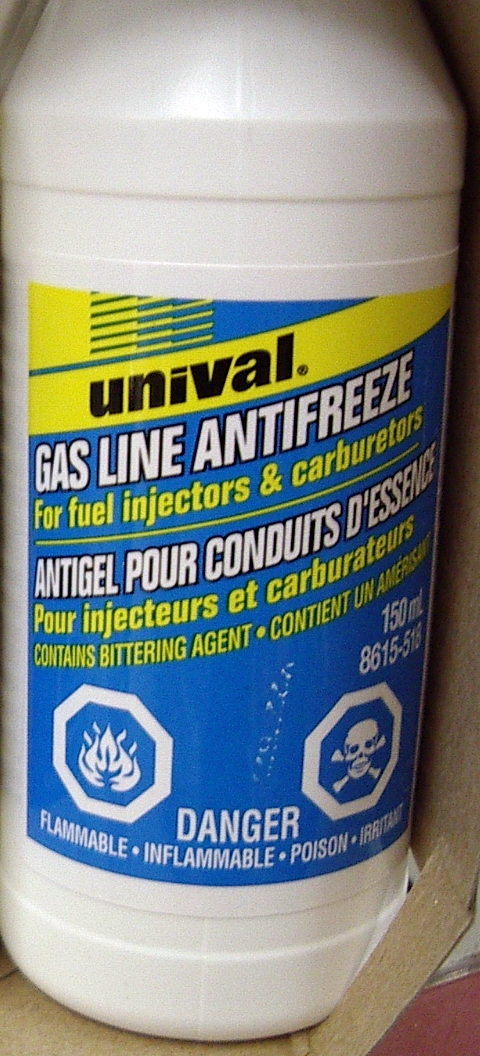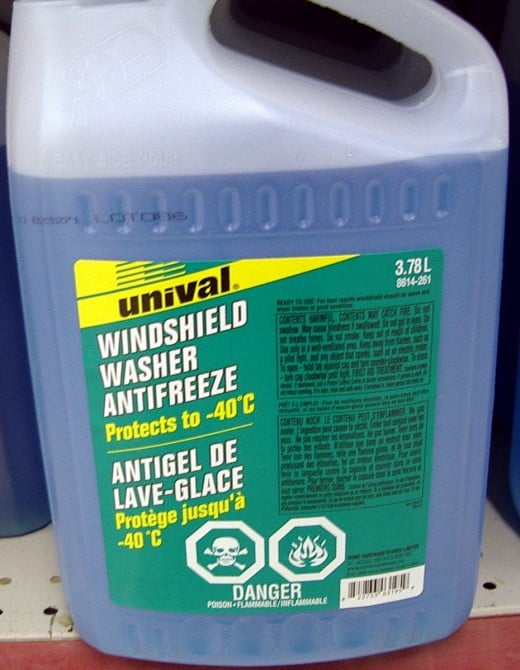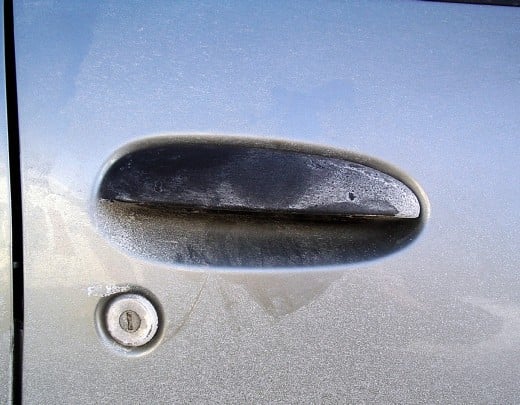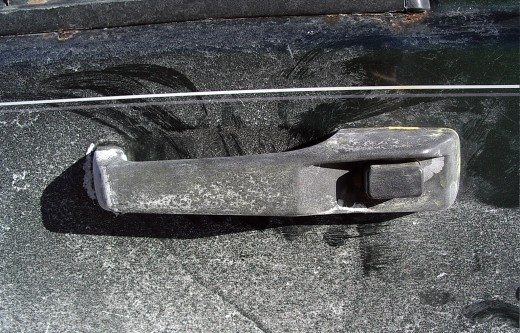Winter Driving
Petrol (Gas) Freezes at -70F
The vagaries of winter driving in a really cold country, are many. In a tropical country you wouldn't be expected to carry flares between November and May, would you?
Gas (Petrol) Freezes, OK!
One of the first things you need to know is that petrol (gas) freezes at -76 F. Although gas doesn’t freeze as easily as water, if it is flowing through a small plastic or rubber tube that is open to the elements. Trust me, it will freeze. Some drivers swear by Ethanol which is basically a mix of gas and 10% ethyl alcohol in the belief that it will not freeze because of the alcoholic content - but eventually it will freeze. To be safe always invest in a tube of ‘gas line antifreeze.’
[PS While on the subject of freezing petrol, make sure that every gas tank you have at home, like a motor mower, whether walk-behind or ride-on, weed-whacker, or snow blower has ‘gas line antifreeze’ included. Also make sure the gas tanks are full before the winter starts. This prevents the build up of moisture in any open spaces in the gas tanks, precluding the freezing from starting. Remember the ‘gas line antifreeze’ for your spare gas tanks.]
Windscreen Washers
Windscreen washer bottles in cold countries such as Canada, do NOT take water; water freezes at 32 Fahrenheit. In Canada windscreen washer fluid has to be capable of withstanding a temperature of at least -40 Fahrenheit and preferably -58 Fahrenheit. The reason why you should preferably chose the -58˚F fluid is because the temperature may be only -10F but with the wind-chill caused by the car’s movement through the frigid air, you can guarantee that it will soon be -40F or below. Keep a couple of cans of -58F in the trunk of your car just in case.
Plug your car in
Believe it or not, but most cars in Ontario, Canada, come fitted with a three pin mains electricity plug. The reason for this is that if you don’t have a garage and have to keep your car outside, you can plug your car into the mains electric circuit at night. The plugs aren’t for heating up the inside of the car; they are there to power the 'block heater,' in other words - to prevent the engine from freezing.
[Forgetting the plugs for a moment, - you will read lots of articles by experts telling you that to warm your car up on a cold morning you only need to run the engine for 5 minutes, so there is no need to waste gas by running the engine any longer. The thing that these 'experts' fail to appreciate is that you are not running the engine to warm up the engine - you are running that engine to warm up the interior of the car, in other words, for your benefit, not the engine's.]


Frozen Doors
If you have a car with this type of door handle (photo), be prepared. When the door freezes, and it will, there is a greater chance of ripping the door handle off before opening the door. Even worse, there is a bigger chance of ripping your fingernails off. With this other type of door handle (photo), you at least have something to hold onto or even tie a rope around, to give more leverage. In really, really, cold winters, your fingers will crack open with the cold, and I don’t mean teensy weensy cracks. Your fingers will be bleeding, and bleeding so much that you will have to put band aids on just to be able to work your keyboard.
[PS The problem with these band aids is that when you wash your hands if they don’t wash off, they will stay on and stay wet. Let’s say you’ve just washed your hands and then gone out to open up your frozen up car – the band aids are still wet and guess whose fingers will freeze solid?]
To ensure your car, and trunk doors don’t freeze up during winter, coat the closing edges with a Teflon based lubricant – there are special liquids for this, but do remember that these should be applied during warm weather. One thing to remember is that lubricants are oily or greasy and you’ll have to be careful how you enter or leave the car to be sure of not soiling your clothing.
Also, keep a hard wearing plastic fork or spoon handy. Please note – plastic – not metal. You can use the handle end of the implement to run along the gap between the car and the door and break the ice seal. Keep one inside the car and outside the car in your pocket. The same applies with an ice scraper/brush. Keep one outside the car and one inside the car, because an ice scraper isn’t much good if it is inside a frozen up car and you are outside.
To open a frozen door, do NOT EVER use a kettle of boiling water to pour over the frozen edges. There are a few reasons for this, apart from the lunacy of it.
1) The boiling water will freeze almost immediately, making things more difficult than before.
2) The boiling water, when it flows over the door window, will break it – that’s a guarantee. If you only use warm water, it will freeze faster and trying to scrape that frozen warm water off the door window will take a heck of an effort.
(As a little plus, the water tends to pour down into the door lock before it freezes – have you ever tried to blow warm air into a car door lock without touching it with your lips? Perhaps you should keep a hair drier handy as well, but a plastic drinkig straw will do in a pinch.)


Breakdowns
First of all, make sure your Automobile Association membership is up to date. If it is your normal habit to wait until you’ve almost run out of gas before refilling – change that habit as soon as you see the first snowflake. Fill up your tank and keep it filled up until spring. When you’re driving in snow and praying that you make it home before the next snowfall; you have enough to worry about without worrying about running out of fuel.
Always carry the following things in winter.
A fully charged cell phone + charger.
Candles and matches.
A blanket
A flashlight
A full water bottle and some nourishing choc bars.
Every winter there are remarkable stories of people who have survived for over a week in a crashed car, due to their foresight in packing a blanket, candies, water, candles and matches. It doesn’t cost that much and it could be a life saver.
Some veteran winter drivers advise that you also carry a shovel to dig yourself out of a ditch and an axe to break a window with.
If you are really in the wilds, carry flares with you. A friend of mine doesn’t carry flares, but to compensate for that oversight, she has two extendable aerials with bright red flags at the top. She also buys no other colour of car but red, and she can’t understand why so many Canadian winter drivers buy white cars, ‘Don’t they realize that they will disappear if they skid into a snow filled ditch?’.
If you decide to be sensible and carry the emergency rations, please do NOT stash them in the trunk. Place them all in a small backpack and stow it behind the passenger seat – you will be able to reach it more easily there than if you stowed it behind the driver’s seat.
Safe driving








